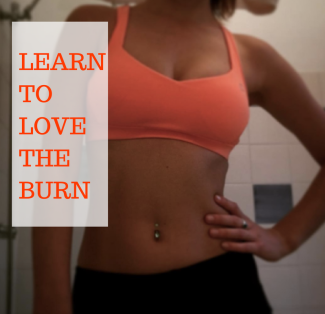As a young woman I am aware of the mainstream media’s effect on how we perceive the appearance of our bodies. I notice in myself an internalisation of a thin ideal, see friends suffer with body image issues and have been exposed to mental health issues related to the media’s thin ideals. The negative effect on young women’s body dissatisfaction by fashion magazines and television consumption is well known (Tiggeman & Slater 2013) and various studies, including that of Tiggeman & Slater (2013) have found links between internet exposure and body dissatisfaction in adolescent girls. Further research into the effects of social media and in particular of the platform Instagram shows that women who are vulnerable to body image issues may be accelerating their issues dramatically when exposing themselves to Instagram. Ahadzadeh, Sharof & Ong (2017) found that Instagram exposure affects women with pre-existing low self-esteem as women’s self-perception, self-schema and self-discrepancy are affected negatively.

So how does this happen? One could spend hours looking at models, clean eating, fitness and yoga on Instagram. Looking specifically at the emergence of fitness images online we can find countless images of thin, athletic women clad with minimal clothing slapped with motivation quotes about getting fit, active and looking athletic. Many of these images will include hashtag ‘#fitspo’.

#Fitspo was originally intended to be the counteraction to #thinspo which promoted thin ideals, weight loss and sometimes disordered eating. #Fitspo instead aimed to show ‘real’ and ‘normal’ bodies (Holland 2016). However, thin women were simply replaced with muscle toned women and the thin ideal simply became the fit ideal. Holland (2016) quotes fitness professionals who do pertain that their #fitspo images are motivating and inspiring to some, and perhaps they may be. In reality studies have found that #fitspo is just as damaging to women as #thinspo (Holland 2016). It is just promoting a slightly different body appeal.

Vogel (2015) points out that when we view images in magazines we realise that the well-known celebrities are air-brushed, cropped and changed. However, social media is perceived as more ‘grass roots’ as images are often not of traditional celebrities, do not use big advertising budgets and sometimes the images may be of people we see as ‘normal’ such as peers or friends (Vogel 2015). All of a sudden we have ‘normal’ people, doing ‘normal’ things… like posing perfectly on the beach in perfect active wear, perfect makeup, perfect filters, and often with perfect picture editing. The young and beautiful Australian Social Media celebrity Essena O’Neill reveals her experience with Instagram, saying that she took staged Instagram photos ‘all day, every day’, could be paid up to $2,000 for a photo, was completely engrossed in gaining ‘likes’ as a means of social acceptance and was left with body image issues (Hunt 2015). For more information on the psychology of likes listen to my podcast below.
Young women then start to see images of women like O’Neill as ‘normal’ and when they feel they do not match this norm self-confidence can fall and body image issues can arise. The failure of many women to apply critical thinking to viewing content is ultimately what leads to distorted views on normality.
However, how much can we really blame Instagram for mental health and body image issues in women? Fidge (2015) recalls her time posting as an Instagram ‘#fitspo’ personality, describing her story about quickly gaining 7,000 followers when tracking her dieting and fitness regime. Her opinion is that body dysmorphia, low self-esteem and eating disorders are the root of the issue and that social media is simply our current agent. Fidge’s opinion may be correct but we must acknowledge there has never been a time where a tool such as social media could fuel our insecurities so easily, readily available and with the potential of being all-consuming. A logical recommendation is for vulnerable individuals to be self-critical about their social media use and to seek help from professionals when needed.
References
Ahadzadeh, A, Sharof, SP & Ong, FH 2017 ‘Self-schema and self-discrepancy mediate the influence of Instagram usage on body image satisfaction among youth’, Computers in Human Behaviour, vol.86, pp.8-16, retrieved 21 Auguts 2017, ScienceDirect, Elsevier.
Holland, E 2016, ‘Why the ‘fitspo’ movement is damaging to women’, The Conversation, weblogpost, 15 July, retrieved 21 August 2017, <https://theconversation.com/why-the-fitspo-movement-is-damaging-to-women-60453>.
Hunt, E 2015 ‘Essena O’Neill quits Instagram claiming social media ‘is not real life’’, The Guardian, weblogpost, 3 November 2015, retrieved 21 August 2017 <https://www.theguardian.com/media/2015/nov/03/instagram-star-essena-oneill-quits-2d-life-to-reveal-true-story-behind-images>.
Tiggeman, M & Slater, A 2013 ‘NetGirls: The internet, Facebook, and body image concern in adolescent girls’ The International Journal of Eating Disorders, vol. 46, pp.630-633, doi: 10.1002/eat.22141.
Vogel, A 2015 ‘Social Media and Body Image: A complicated relationship’ IDEA Fitness Journal, vol.12, no.1, pp.38-45, retrieved 21 August 2017, Academic OneFile.
Creative Commons
Header image: ‘Fitness Passion‘ by Gokhan Altintas. Creative Commons CCBY-NC-ND2.0. Cropped using WordPress.

Hi Eva,
A really interesting read and a topic that is of close interest to me as I use Instagram a lot and find myself constantly comparing myself to the unrealistic and filtered bodies in my feed and you provided a really well researched blog on the topic. I thought the images related well with the content and added value while being visually appealing. While on visuals, a sans serif font serves the web better as it is easier to read than a font with serifs. I really liked how the podcast added an extra dimension to the blog and you could have read/listened to one without needing to read the other. They complimented each nicely.
Thanks for sharing!
Sian
LikeLike